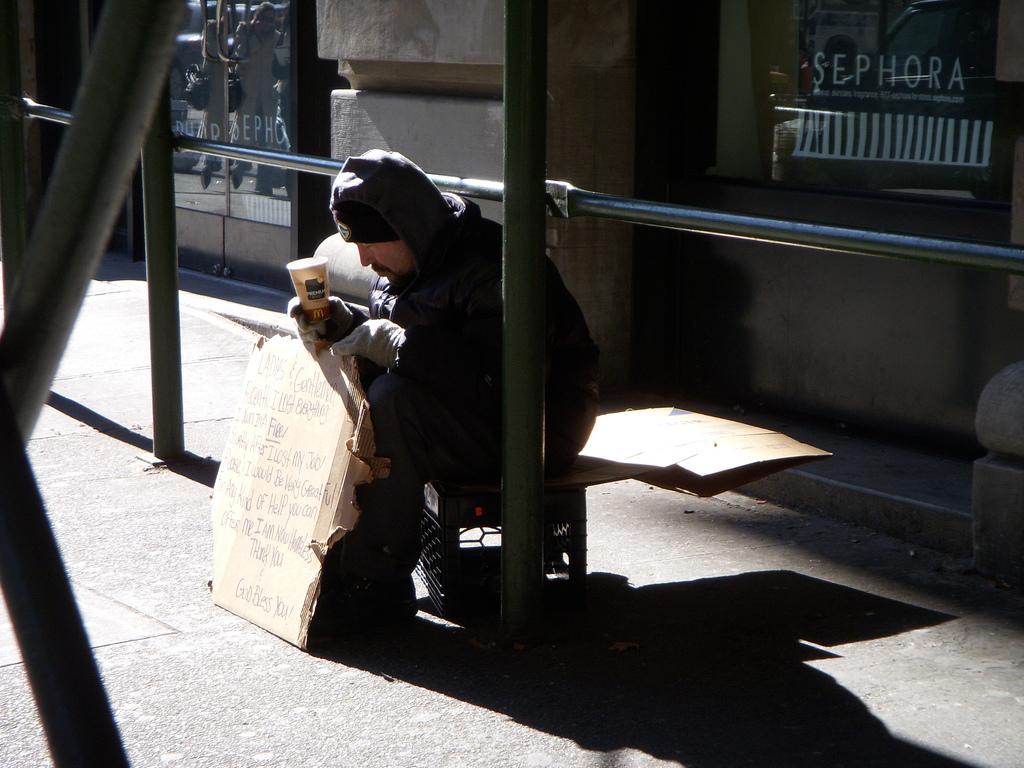Students Reach Out to NYC’s Homeless
June 1, 2011

Published: Febrary 14, 2008
FORDHAM—Fordham students hit the streets on the night of Jan. 28 for the sixth annual Homeless Outreach Population Estimate (HOPE) in an effort to update statistics on homelessness in New York City and help alleviate the problem. They joined more than 2,500 volunteers from midnight to 4 a.m. to survey those living unprotected on streets, in parks and on subways.
New York City’s Department of Homeless Services (DHS) runs HOPE every year. According to DHS, HOPE 2008 is an element of Mayor Michael Bloomberg’s “five-year action plan to end chronic homelessness,” known as “Uniting for Solutions Beyond Shelters.” HOPE is a vital part of this project because it allows the city to gauge the efficiency of current efforts at eliminating street homelessness, as well as allocating appropriate supplies to shelters located in areas with the greatest population of homeless individuals.
Bonnie Mohan, FCRH ’07, is the Program Developer of Case Management programs for the Citizens Advice Bureau (CAB), the largest settlement house in the Bronx, which provides services for homeless individuals and families. CAB has worked closely with both DHS and Fordham University for the past three years to organize participation in HOPE.
“As a service provider for this highly at-risk population, this count is critical for understanding what we are dealing with. Last year’s HOPE count revealed that between February 2006 and January 2007, street homelessness in the Bronx decreased by an astounding 41 percent. We hope to see similar results after this year’s count,” Mohan said.
Out of 100 volunteers canvassing the Bronx, approximately 80 came from Fordham University, according to Kate Cavanagh, associate coordinator of the community service program at FCLC. Twelve of the students were from Lincoln Center. Cavanagh said the students included those who had participated in Urban Plunge, members of United Student Government (USG) and the entire Global Outreach (GO!) Washington, D.C. team.
Cavanagh reported that students were recruited largely through word of mouth, though Facebook groups and flyers sent to clubs also helped advertise. While most students volunteered to survey, others served as “homeless decoys,” a method used to ensure accuracy of the count.
Dave de la Fuente, FCLC ’10, president of USG and the student coordinator of the community service program at FCLC, participated in the count for the first time this year. “We were given maps and told specifically which corners of the street to visit and exactly how to walk,” de la Fuente said. Volunteers’ adherence to these directions could be verified by reports from decoys planted in specific locations.
The volunteers were instructed to ask everyone they came across to participate in the survey, unless the person was visibly working, de la Fuente said. Homeless individuals who were encountered were questioned about their living situation, and offered transport to a local shelter. If they accepted, de la Fuente said that buses on call for HOPE would be contacted, and the volunteers would remain with the individual until transportation arrived.
Alex Oryshkevych, FCRH ’07, participated in the count for his third consecutive year and said that he believes that projects such as HOPE are essential to the New York experience and the Jesuit education. “In my experience I’ve engaged as little as one or two homeless individuals, and on other occasions as many as 30 in one particular area,” Oryshkevych said.
Erin McLaughlin, FCRH ’11, was new to the event this year. McLaughlin said that a volunteer who accompanied her group was formerly homeless himself. He had participated in a program that allowed him to finish his education and is currently working towards a degree in clinical psychology.
“It was so inspiring to hear a success story from one of the programs that use the information collected from the HOPE Count,” McLaughlin commented.
Kelly McEvoy, FCRH ’11, learned about HOPE after participating in Urban Plunge in August. “It just opens your eyes to the problems people around us have,” McEvoy said. “It can make you stop and realize something needs to be done about this.”









